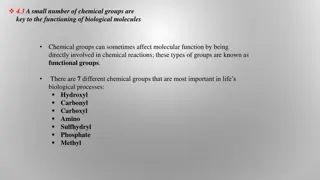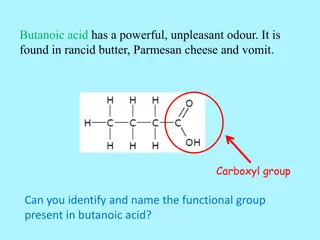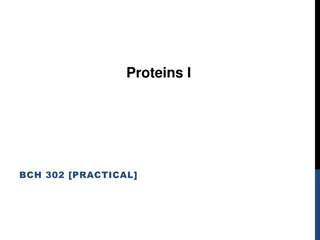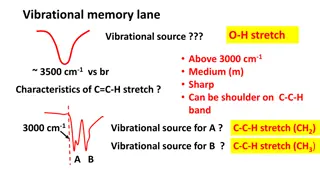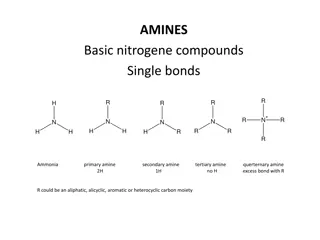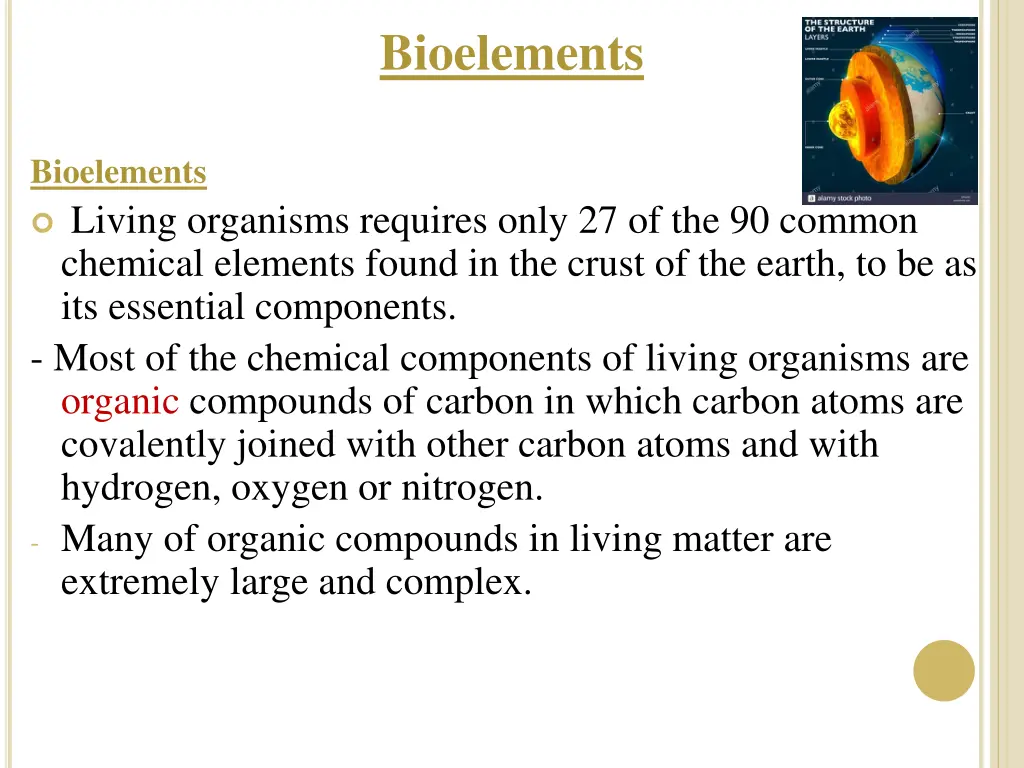
Essential Components of Living Organisms: Bioelements Insights
Discover the fundamental role of bioelements in living organisms requiring only 27 essential chemical elements, with a focus on carbon-based organic compounds and the key properties of hydrogen, oxygen, nitrogen, and carbon in covalent bonding. Explore the significance of functional groups in organic biomolecules and their chemical properties.
Download Presentation

Please find below an Image/Link to download the presentation.
The content on the website is provided AS IS for your information and personal use only. It may not be sold, licensed, or shared on other websites without obtaining consent from the author. If you encounter any issues during the download, it is possible that the publisher has removed the file from their server.
You are allowed to download the files provided on this website for personal or commercial use, subject to the condition that they are used lawfully. All files are the property of their respective owners.
The content on the website is provided AS IS for your information and personal use only. It may not be sold, licensed, or shared on other websites without obtaining consent from the author.
E N D
Presentation Transcript
Bioelements Bioelements Living organisms requires only 27 of the 90 common chemical elements found in the crust of the earth, to be as its essential components. - Most of the chemical components of living organisms are organic compounds of carbon in which carbon atoms are covalently joined with other carbon atoms and with hydrogen, oxygen or nitrogen. - Many of organic compounds in living matter are extremely large and complex.
- The four most abundant elements in living organism are: Hydrogen Oxygen which make up 96% of the Carbon mass of most cells nitrogen - Carbon, hydrogen, nitrogen, and oxygen posses a common property: they readily form covalent bonds by electron pair sharing. Hydrogen needs one electron to complete their outer Oxygen needs two electrons electron shells and thus form Nitrogen needs three electrons stable covalent bonds. Carbon needs four electrons
- These four elements thus react with each other to form a large number of different covalent compounds. - Carbon, nitrogen, hydrogen and oxygen are the lightest elements capable of forming covalent bonds. Carbon atoms: - Carbon atoms posses another and most significant property, the capacity to bond with each other. In this way covalently linked carbon atoms can form linear or branched or cyclic backbones of different organic molecules.
- The four covalent single bonds of a carbon atom are spaced in a tetrahedral arrangement with an angle of about 109.5 between any two of them. This angle varies little from one carbon atom to another in different organic molecules. (because of this characteristic, different organic compounds of carbon can have many different kinds of three-dimensional structures. There is complete freedom of rotation around each carbon-carbon single.
Covalent bonds of carbon have characteristic bond length. carbon-carbon single bonds have an average length of 0.154 nm. whereas carbon-carbon double bonds length are shorter, about 0.134 nm long. Since carbon atom also form covalent bonds with oxygen, hydrogen, nitrogen and sulphur, many different kinds of functional groups can be introduced into the structure of organic molecules. Most biomolecules (i.e. molecules found in living things) are compounds of carbon.
Functional groups of organic biomolecules determine their chemical properties: -Nearly all organic biomolecules can be regarded as derivatives of hydrocarbons ( compounds of carbon and hydrogen in which the backbone consists of carbon atoms joined by covalent bonds and the other bonds of the carbons are shared with hydrogen atoms). -One or more hydrogen atoms of hydrocarbon may be replaced by different kinds of functional groups to yield different families of organic compounds.
-Typical families of organic compounds and their characteristic functional groups are: alcohols: have hydroxyl groups amines: have amino groups acids: have carboxyl groups Several other functional groups are also important in biomolecules. -From functional groups present in organic biomolecules, it is possible to analyze and predict their chemical behavior and reactions.
- Most of biomolecules are poly functional, containing two or more different kinds of functional groups. example: amino acids, glucose







